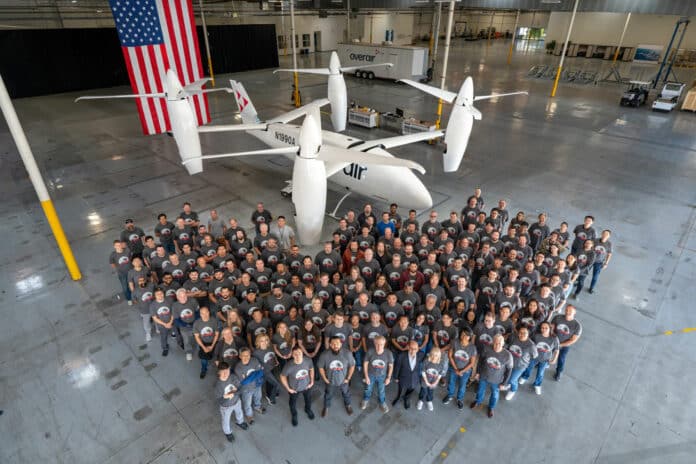Many major aircraft companies and startups announce their ambitious plans to develop electric vertical take-off and landing (eVTOL) aircraft, but they often fail to produce in actual physical form. However, that’s not the case with Overair’s Butterfly.
The advanced air mobility startup announced it completed assembly of the first full-scale prototype of its Butterfly electric air taxi and expects to begin flight tests early next year.
The Butterfly incorporates four oversized rotors, which Overair says are more than twice the size of those used by other eVTOL aircraft. The electric air taxi can carry up to five passengers plus one pilot and has a 100-mile (161 km) range and 200-mph (322 km/h) top speed. It is designed to be the quietest eVTOL on the market and has no single point of failure, with the ability to hover on two of its four propellers.
The vehicle is built around Optimum Speed Tilt Rotor (OSTR) and Individual Blade Control (IBC) technologies. The OSTR technology adjusts the propeller revolutions per minute to boost energy efficiency in the vertical, transition, and forward phases of flight, reducing power demand for hovering by 60%. The IBC technology reduces noise vibration and propeller loads, improving safety while delivering a smoother ride and lowering maintenance costs.
Featuring a spacious cabin, high payload, and the quietest, most efficient operation in its class, Overair’s Butterfly will be perfectly suited for passenger, medical, cargo, and military applications.
According to their announcement, the flight testing of the model will validate their proprietary OSTR and IBC technology, which they claim will give their vehicle an edge in terms of performance, reliability, and low noise levels.
The final assembly of the first Butterfly prototype has been conducted at Overair’s headquarters in Santa Ana, California. The engineering team has started vehicle-level ground testing at the site before transferring the aircraft to its flight test facility in Victorville, California.
Initial tests, scheduled to begin in early 2024, will focus on various aspects, including the aircraft’s propulsion systems, flight control mechanics, safety features, and operational efficiency.
“Assembling our first full-scale prototype vehicle marks the culmination of years of industry expertise, meticulous development planning, innovative engineering, and the hard work of the entire Overair team,” said Ben Tigner, CEO of Overair. “This seamless transition from propulsion testing to a full-scale prototype underscores our dedication to redefining the eVTOL landscape with safer, quieter, and more reliable aircraft.”
